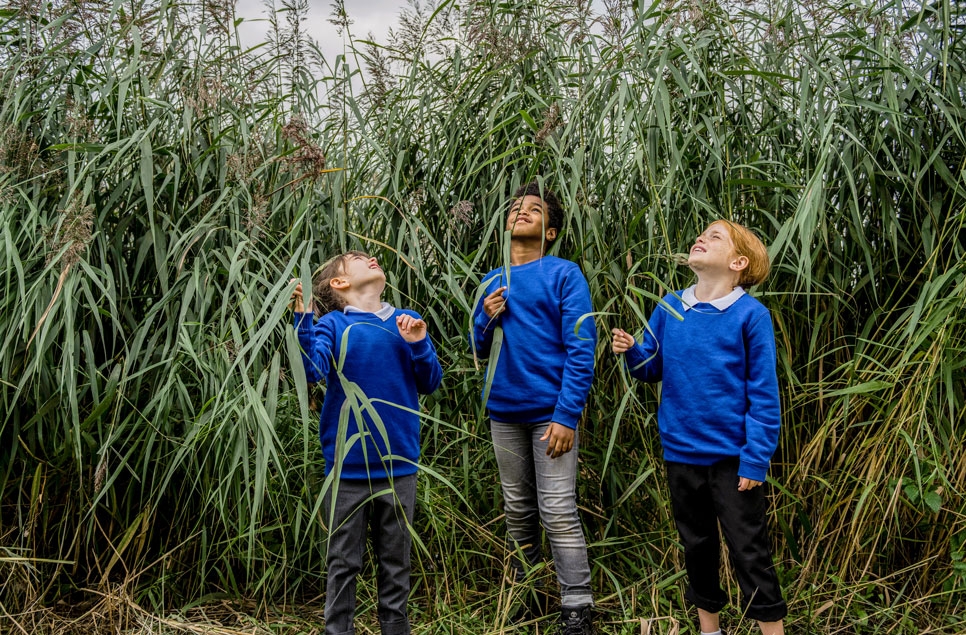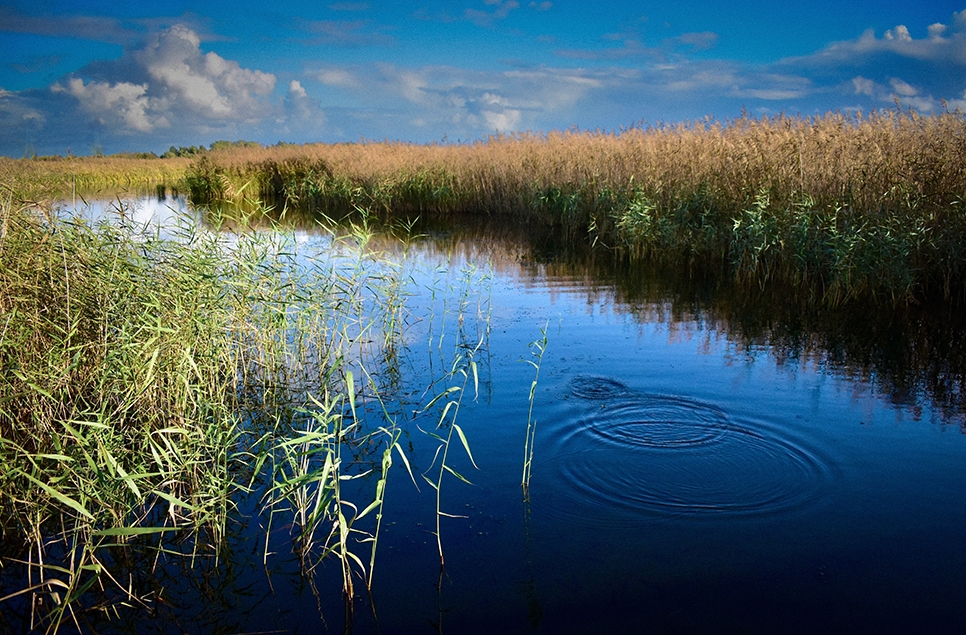Wetlands - a natural answer to global climate and biodiversity crises
Over the last couple of years we have published four proposals, or Route Maps, that together show how wetlands can reduce flood risk, improve water quality, store carbon and improve people’s wellbeing.
They examine how governments, businesses and communities can work together to maximise the multiple benefits wetlands can bring. And set out the policy changes needed to ensure everyone is aware of the power of wetlands.
Wetlands for flood resilience

Our most recently published proposal calls for a radical rethink on flood protection and shows how wetlands can help protect us from floods.
The impacts of storms Babet, Ciaran and Debi in late 2023 exposed just how unprepared the UK is to the growing risk of flooding caused by climate change. Our new report (found on our Blue Recovery page) demands the government puts nature-based solutions like wetlands, at the heart of plans to make communities and businesses more flood resilient.
Tom Hayak is the Senior Project Manager (Nature-based solutions) and explains further:
"Flooding is bad for the economy, bad for people and bad for nature. Traditional flood defences often make problems worse, by diverting floodwater with the result that the flooding just impacts elsewhere."
Naturally managing water in the right place is a more effective, more sustainable and less expensive way to manage flood risk. Wetlands also offer many other amazing benefits like boosting biodiversity and improving our health and wellbeing."
Wetlands for water quality

Just 14% of our rivers are in good health. In our Water Quality route map WWT is calling for urgent action to unlock the potential of treatment wetlands to help tackle our water quality crisis. Treatment wetlands are specifically designed wetlands that amplify the natural water cleaning properties that occur in wetlands. These wetlands will provide a low-cost solution to treating water, while bringing a range of benefits for people and wildlife. By creating them at a larger scale we can tackle our growing water pollution crisis, while also boosting biodiversity and bringing life back to our local communities.
Wetlands for urban wellbeing

84% of people in the UK live in urban areas, often without adequate access to nature. In our Wetlands for urban wellbeing route map WWT envisages the creation of wildlife-rich urban wetlands for wellbeing across many different scales, from ponds in people’s gardens to large blue spaces in their neighbourhoods. Urban wetlands would connect together to benefit the whole community. They can also help Government reach their biodiversity goals and help prevent sewage overflow issues (using sustainable urban drainage systems), giving water companies a helping hand.
Wetlands for carbon storage

The world is on track for 3 degrees of warming under current climate change plans. This might not sound like a lot but it will have devastating impacts on people’s lives and the survival of our natural world. Wetlands play a vital role in limiting the amount of carbon in the atmosphere. But the damage and destruction of wetland habitats often leads to large releases of greenhouse gases to the atmosphere.
In our route map ‘Wetlands for carbon storage’ we showcase how blue carbon (that stored in marine and coastal habitats) is one of the most important carbon stores in the UK. Saltmarshes, in particular, are very efficient at locking away carbon, while also bringing a range of additional benefits for people and wildlife. In saltmarshes, carbon is typically captured 40 times faster than temperate forests. There is under 50,000 hectares of saltmarsh in the UK today, but we need 22,000 more to harness the carbon storing powers of saltmarsh.
Positive change
These four proposals for a Blue Recovery are already influencing change at Government level. For example, the requirement to include Sustainable Urban Drainage systems (SUDs) into all new developments was a key ask in our ‘Wetlands for Urban Wellbeing’ route map. This will now be coming into force this year. In addition, WWT is working with Government to develop a Saltmarsh code that will help incentivise more, good quality saltmarsh to be created.
Strengthening our voice
Our four proposals have also provided an important springboard for more collaborative working across the environmental charity sector and with a broader range of organisations, from water companies to housing developers, farmers to local communities. They’ve also enabled us to build stronger relationships with politicians across all parties. For example, through the Wetlands All Party Parliamentary Group, set up by WWT.
WWT will continue to use these route maps to push through vital policy changes with the current Government. As we move into a General Election year, we hope to see more of our policies adapting in upcoming manifestos. A Blue Recovery must be at the heart of the UK’s approach to tackling the climate, wellbeing and biodiversity crises we face.
Visit our Blue Recovery page to read the full reports:
Read more


